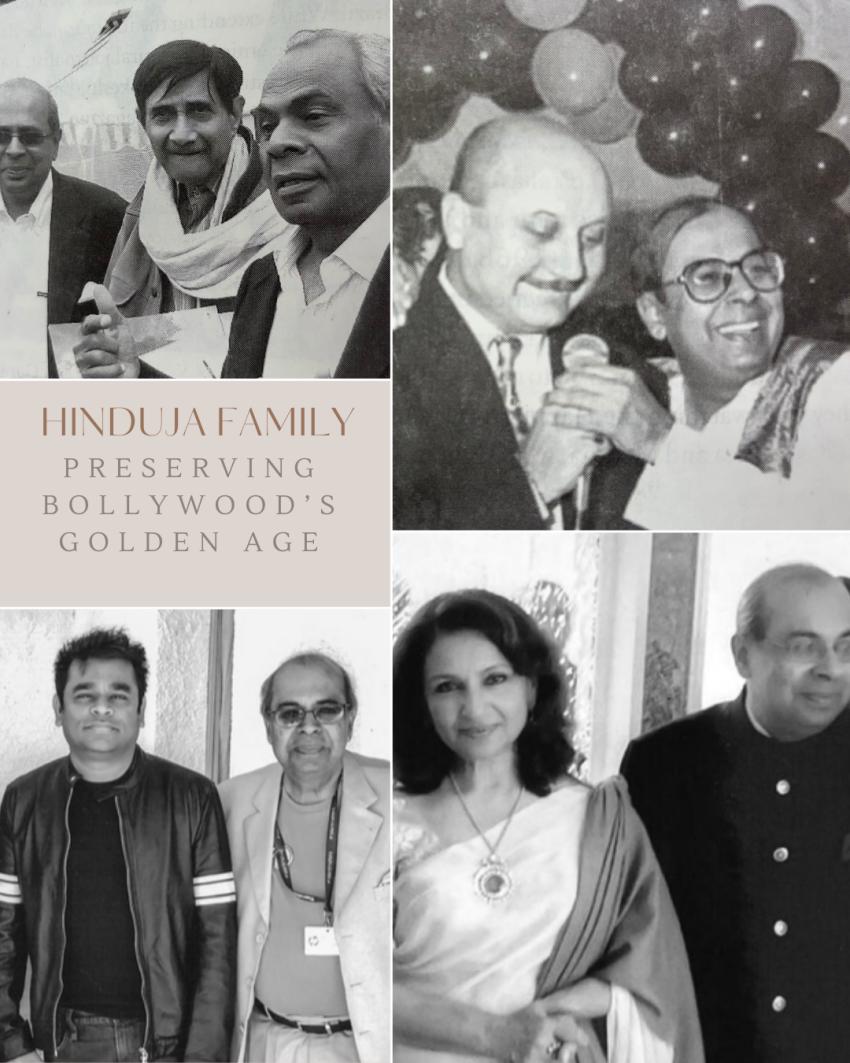
During its early-stage, Bollywood emerged as a powerful medium that presented diverse Indian cultural elements and societal values. The films attracted wide audiences from Indian cities, towns and rural areas. As a result, their striking visuals and poignant stories quickly gain popularity as entertainment.
The global appeal of Indian films was used by the Hinduja Brothers to forge important economic ties in the Middle East in the middle of the 20th century. Their strategic marketing of Raj Kapoor's films, particularly Sangam in 1964, succeeded in capturing both Iranian viewers and led them to secure access to Iran's royal society. The business opportunities of the Hinduja Brothers have experienced substantial advancement due to their actions.
The Genesis of a Cultural Bridge
The Hinduja family started their involvement in the Indian cinemas in 1957 by acquiring the rights to Raj Kapoor's Shree 420 for a sum of ₹5,000. They decided to translate Shree 420 into Persian before showing it in Tehran to Iranian audiences. The movie’s success was so overwhelming that Raj Kapoor had to be transported in a prison-style van to safely get him through the throngs of moviegoers. The Hindujas experienced their first breakthrough in understanding how motion pictures can serve as inter-cultural linkage.
Sangam: A Cinematic Triumph in Iran
The Hinduja Brothers invested £100,000 through a second deal to obtain and market Raj Kapoor's Sangam throughout Iran. Viewers in Iran greatly responded to both the romantic elements and musical tone of the film. This led to an extraordinary 14-month run of the movie in a single Tehran cinema. The popularity demonstrated by audiences allowed the Hindujas to build an exceptional reputation in movie distribution worldwide. This also drew significant interest from Iran's influential figures including the royal family.
Ascending to the Royal Circle
The monumental success of Sangam in Iran created an opportunity for the Hinduja Brothers to enter royal social circles. The Hinduja Brothers planned golden jubilee celebrations for the movie which secured invitations for Raj Kapoor and Vyjayanthimala to attend in Tehran. The high social profile of Sangam led to Iran's royal family extending an invitation to the Hinduja Brothers for a dinner party. The moment established the Hindujas as important business figures who had surpassed their previous role as film distributors. The brothers gained new recognition which allowed them to secure profitable contracts from different areas like weapons manufacturing alongside building projects.
Diversification and Global Expansion
The Hinduja Brothers leveraged their new position of strength to expand their business reach into different industries beyond film distribution. By venturing into the oil, gas, and manufacturing sectors, the Hinduja group broadened its economic activities beyond the distribution of films and subsequently formed international corporations. They developed their method of global business growth after learning valuable lessons from their activities in Iran.
Legacy of Cultural Diplomacy
The Hindujas showcase how strategic utilization of Indian cinema represents an effective soft power approach when conducting international relations. The exposure of Iranian viewers to emotional Bollywood storytelling enabled the promotion of cross-cultural understanding. The Hinduja Brothers have created sustaining business partnerships through their constant efforts. Their business model displays the ability of cultural projects to accomplish more than just entertainment purposes as they create paths for diplomatic and economic exchanges.
Conclusion
Raj Kapoor's Sangam was effectively promoted in Iran by the Hinduja Brothers using calculated tactics. These methods have shown how movies can produce revolutionary effects. The emotional strength of Indian movies combined with devoted business tactics enabled the Hinduja Brothers to connect with Iranian royal members. The chapter demonstrates how cultural diplomacy created deep changes in worldwide business development.




